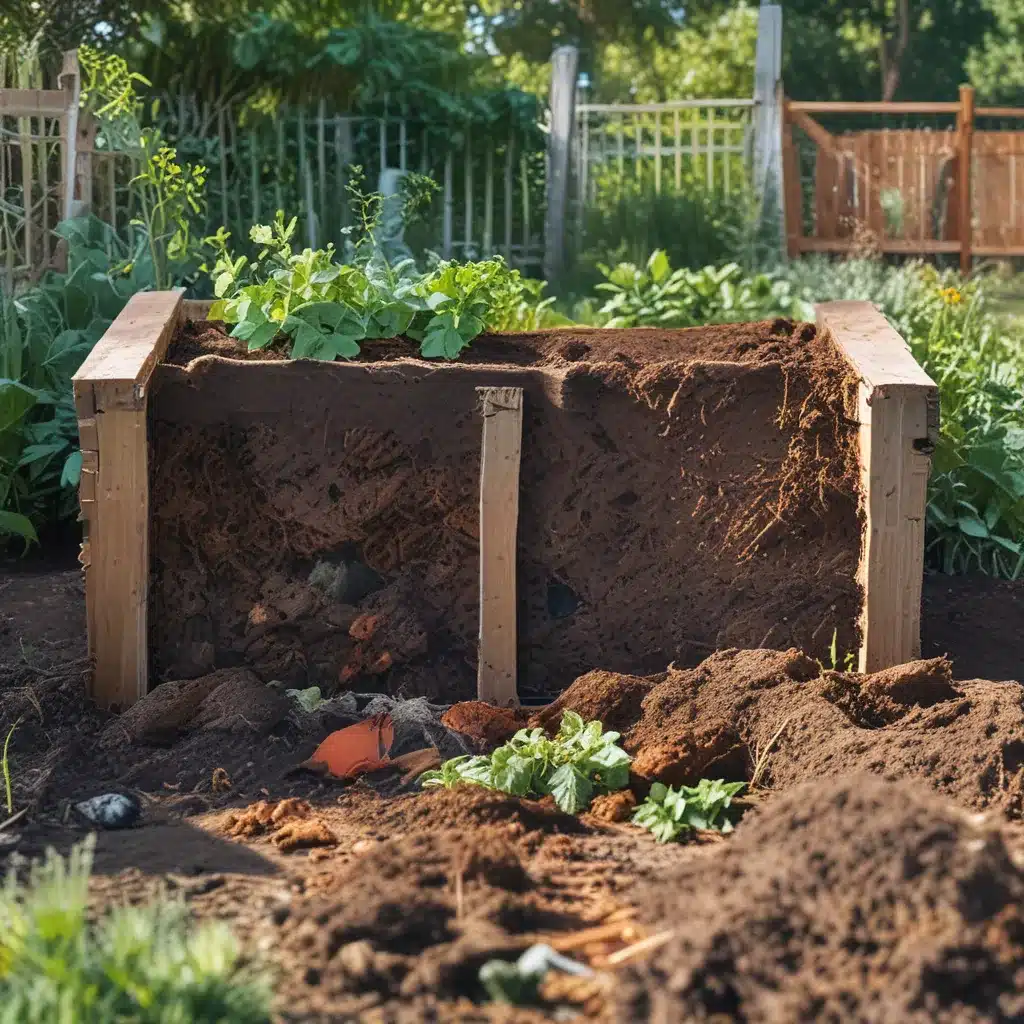
Confessions of a Reluctant Composter
I’ll admit it – for the longest time, the idea of composting seemed daunting and, quite frankly, a bit messy. As a self-proclaimed “gardener at heart,” I prided myself on being eco-conscious, recycling faithfully and even planting native flowers to cut down on water and pesticide usage. But when it came to composting, I just couldn’t bring myself to take the plunge.
That is, until I stumbled upon a game-changing article that showed me just how easy and rewarding backyard composting can be. Now, I’m hooked! In fact, I’m so excited about my homemade compost bin that I can’t wait to share my newfound knowledge with you.
The Beauty of Backyard Composting
You see, I used to view composting as this complex, high-maintenance task that required a lot of specialized equipment and know-how. But as it turns out, it’s actually a beautifully simple way to turn your everyday food scraps and yard waste into nutrient-rich soil for your garden. And the best part? You can get started with just a few basic materials you likely already have at home.
According to the team at Barefoot Garden Design, all you need is a 21 ratio of “brown” carbon-rich materials (like leaves, newspaper, and eggshells) and “green” nitrogen-rich materials (including fruit and veggie scraps, coffee grounds, and grass clippings). Mix those together in a bin or pile, add a bit of moisture, and voila – you’re on your way to composting success.
Assembling Your Compost Bin
Now, I know what you’re thinking – a bin or pile? How complicated could that be? Well, let me break it down for you.
For my own backyard composting setup, I opted for a simple 30-gallon plastic storage bin with a tight-fitting lid. The team at Young House Love had the right idea – all you need to do is drill a few small holes in the bottom and lid for airflow, and you’re good to go.
Of course, there are plenty of other compost bin options out there, from fancy rotating bins to DIY creations made from old pallets. But for my money, the basic plastic bin is the way to go. It’s inexpensive, easy to set up, and keeps everything nicely contained – no unsightly piles or wandering critters here!
Feeding Your Compost
Once your bin is all set up, it’s time to start feeding the beast. And let me tell you, your compost pile is a hungry one! But don’t worry, it’s not as complicated as it might seem.
The key is to maintain that perfect 21 ratio of browns and greens. For the browns, think dry, carbon-rich materials like dead leaves, shredded newspaper, or even those pesky dryer lint balls. And for the greens, focus on your food scraps, grass clippings, and other nitrogen-rich wet materials.
The EPA has a great guide on all the compostable goodies you can toss in, from eggshells to coffee grounds. Just be sure to steer clear of things like dairy, meat, and pet waste – those can create some unpleasant odors and attract unwanted critters.
As you layer your browns and greens, don’t forget to give everything a gentle stir with a shovel or stick. This helps aerate the pile and ensures even decomposition. And if things start to get a little too dry, just give it a spritz of water until it has the consistency of a well-wrung sponge.
The Composting Magic
Now, the real fun begins as you watch your compost pile work its magic. Over the next few weeks or months, those organic materials will start to break down, thanks to the hard work of bacteria, fungi, and even some friendly worms.
The team at Thornappple CSA knows a thing or two about the joys of homemade compost. They describe the process as “nutrient-rich soil amendment” that’s a total game-changer for your garden. And let me tell you, they’re not exaggerating.
As your compost matures, it transforms into a dark, crumbly, and soil-like substance that’s brimming with essential nutrients for your plants. Imagine the boost your veggies, flowers, and even your lawn will get from this natural, chemical-free fertilizer. It’s like a superfood for your soil!
The Finishing Touches
One of the best things about backyard composting is that there’s really no wrong way to do it. As long as you’ve got the basic elements – browns, greens, moisture, and oxygen – your compost will come together, even if it takes a bit of trial and error.
Just keep an eye on the moisture levels, and give your pile a good stir every now and then. If things start to smell funky, it’s a sign that you need to adjust the ratio of materials. A little more brown matter or a sprinkle of water should do the trick.
And when that rich, earthy aroma starts wafting through the air, you’ll know your compost is ready to be incorporated into your garden. Simply scoop out the finished product, leaving about a third of the material behind to kickstart the next batch.
The Joys of Homemade Compost
As I reflect on my composting journey, I can’t help but feel a sense of pride and accomplishment. What was once a daunting task has become a rewarding hobby that not only benefits my garden but also reduces the amount of waste I send to the landfill.
And let me tell you, there’s nothing quite like the satisfaction of watching your homemade compost work its magic. Whether you’re sprinkling it over your lawn, mixing it into your potting soil, or using it as a nutrient-rich mulch, the results are nothing short of amazing.
So, if you’re like me and have been hesitant to dive into the world of backyard composting, I encourage you to take the plunge. Trust me, it’s easier than you think, and the payoff is well worth it. Your garden (and the planet) will thank you!



